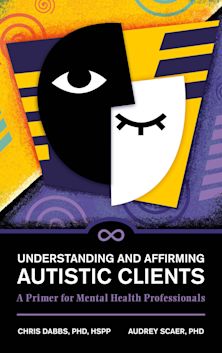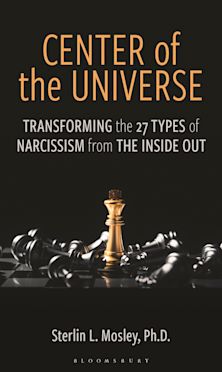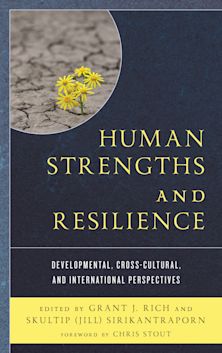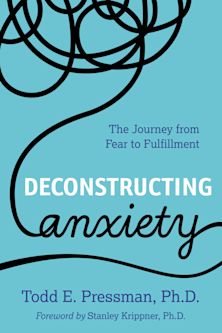- Home
- ACADEMIC
- Psychology
- Psychopathology & Clinical Psychology
- New Paradigms for Treating Relationships
New Paradigms for Treating Relationships
Jill Savege Scharff (Anthology Editor) , David E. Scharff (Anthology Editor) , Sylvie Angel (Contributor) , Carl Bagnini (Contributor) , Jenny Berg (Contributor) , Norma Caruso (Contributor) , Christopher Clulow (Contributor) , Robert Cvetek (Contributor) , Walton Ehrhardt (Contributor) , Tomaz Erzar (Contributor) , Katarina Kompan Erzar (Contributor) , Lilia Gagnarli (Contributor) , Sondra Goldstein (Contributor) , Chtistian Gostecnik (Contributor) , Suzamme Iasenza (Contributor) , Hugh Joffe (Contributor) , Penny Jools (Contributor) , Ana Losso (Contributor) , Roberto Losso (Contributor) , Molly Ludlam (Contributor) , Ana Maria Nicolo (Contributor) , James L. Poulton (Contributor) , Kate Scharff (Contributor) , Joan Soncini (Contributor) , Michael Stadter (Contributor) , Yolanda Varela (Contributor) , Hans-Jurgen Wirth (Contributor) , Richard Zeitner (Contributor)
New Paradigms for Treating Relationships
Jill Savege Scharff (Anthology Editor) , David E. Scharff (Anthology Editor) , Sylvie Angel (Contributor) , Carl Bagnini (Contributor) , Jenny Berg (Contributor) , Norma Caruso (Contributor) , Christopher Clulow (Contributor) , Robert Cvetek (Contributor) , Walton Ehrhardt (Contributor) , Tomaz Erzar (Contributor) , Katarina Kompan Erzar (Contributor) , Lilia Gagnarli (Contributor) , Sondra Goldstein (Contributor) , Chtistian Gostecnik (Contributor) , Suzamme Iasenza (Contributor) , Hugh Joffe (Contributor) , Penny Jools (Contributor) , Ana Losso (Contributor) , Roberto Losso (Contributor) , Molly Ludlam (Contributor) , Ana Maria Nicolo (Contributor) , James L. Poulton (Contributor) , Kate Scharff (Contributor) , Joan Soncini (Contributor) , Michael Stadter (Contributor) , Yolanda Varela (Contributor) , Hans-Jurgen Wirth (Contributor) , Richard Zeitner (Contributor)
For information on how we process your data, read our Privacy Policy
Thank you. We will email you when this book is available to order
You must sign in to add this item to your wishlist. Please sign in or create an account
Description
New Paradigms for Treating Relationships is a contemporary international perspective on the psychoanalytic theory and practice of couple and family therapy. It summarizes theory, sets it in context, and illustrates the concepts with clinical illustrations. This clearly written and engaging book is essential for practicing couple and family therapists, psychotherapists and psychoanalysts, teachers of psychotherapy, as well as for students of psychoanalysis and philosophy.
Table of Contents
0 List of Figures
0 Credits
0 Epilogue
0 Introduction to Part 2
0 Introduction to Part 1
0 Preface and Acknowledgements
0 List of Tables
0 Contributors
Chapter 1 Models of the Mind for Family Therapy
Part 1 Family Therapy
Part 2 Couple Therapy
Chapter 2 New Paradigms for Treating Relationships
Chapter 3 Intraphysic, Interphysic, and Transphysic Communication
Chapter 4 Family Process and Individual Emotion
Chapter 5 Relational Family Therapy
Chapter 6 The Family in Psychosis: Transpersonal Pathologies
Chapter 7 Folie a Deux: A Model for Transpersonal Disorders
Chapter 8 Psychotherapy for the Parents as a Couple
Chapter 9 Sibling Relationships
Chapter 10 Play in Family Therapy
Chapter 11 Divorce Terminable and Interminable
Chapter 12 Therapeutic Supervision for Families of High Conflict Divorce
Chapter 13 Expanding the Frame in Therapy with a Stepfamily
Chapter 14 Family Dynamics and Aids Phobia: A Case Study
Chapter 15 Consulting to a Family Business
Chapter 16 Holding on and Letting Go: A Family Therapy Evolves into Couple Therapy
Chapter 17 A Clinical Introduction to Couple Therapy
Chapter 18 Object Relations Perspective on a Phenomenological Case History
Chapter 19 Couple Psychotherapy and Attachment Theory
Chapter 20 Integrating Attachment Theory and Neuroscience in Couple Therapy
Chapter 21 Obstacles for the Psychoanalyst in the Practice of Couple Therapy
Chapter 22 Dreams and the Introduction of the Third into the Transference Dynamic
Chapter 23 The Analytic Third and Cotransference in Couple Therapy
Chapter 24 Narcissistic Disorders in Marriage
Chapter 25 Couples in Narcissistic Collusion: Sexual Fantasy and Acting Out
Chapter 26 Dynamics of Sadomasochism in the film The Night Porter
Chapter 27 Unconscious Sources of Low Sexual Desire in Gay, Lesbian, and Heterosexual Peer Marriages
Chapter 28 A Troubled Marriage in Sex Therapy
Chapter 29 Intercultural Couple Therapy
Chapter 30 Brief Therapy with Couples and Individuals
Chapter 31 Containing Anxiety in Divorcing Couples
Chapter 32 The Splitting Function of the Dyad and the Containment of the Couple
Product details
| Published | 02 Jun 2006 |
|---|---|
| Format | Ebook (Epub & Mobi) |
| Edition | 1st |
| Extent | 512 |
| ISBN | 9781461703877 |
| Imprint | Jason Aronson, Inc. |
| Series | The Library of Object Relations |
| Publisher | Bloomsbury Publishing |
About the contributors
Reviews
-
With the help of many case examples, the essays explore a wide range of important topics, including divorce, stepfamilies, AIDS, family business consultation, narcissism, and sexual dysfunction. Founded on object relations theory, the discussions integrate current attachment, trauma, and neuroscience research. ...the book revises and updates psychoanalytic thinking and its application in family therapy. The application of psychoanalytical concepts, which is achieved through the many case studies offered, demystifies this therapy approach, making it accessible to both students and professionals. Summing Up: Recommended. Graduate students through professionals.
Choice Reviews
-
New Paradigms for Treating Relationships brings previously unheard voices from many countries together to create a global perspective that brings depth and breadth to psychoanalytic couple and family therapy. The book demonstrates the value placed internationally on applying psychoanalytic insight to understanding family dynamics and devising treatment for families and couples. The book gives access to the illuminating ways of thinking about analytic couple and family therapy described in the Spanish, French, and German literature. It widens readers' focus while staying true to the in-depth way of working with the unconscious that is characteristic of psychoanalysis.
Sir Read Alot Book Review
-
In New Paradigms for Treating Relationships the Scharffs have assembled a rich collection of psychoanalytic thinking about the family generously illustrated with case studies to show how complex abstractions are lived out and put into practice.
Michael P. Nichols author of The Lost Art of Listening
-
...the editors have brought together an impressive collection of papers, which together convey something of the richness, the diversity, and the energy of an approach to work with couples and families that is generating a growing level of interest in Australia and internationally.
Jim Crawley, Psychotherapist, WA.
-
In case you thought that creative psychoanalytic thinking about marital and family relationship had come to an end years ago, take another look. This new book, edited by the pre-eminent object-relations family therapists, Jill and David Scharff, is the best volume in this area to appear in many years. It will broaden and deepen the understanding of couple and family relationships of therapists of all theoretical orientations.
Alan S. Gurman Ph.D., emeritus professor of psychiatry; director of family therapy training at the University of Wisconsin Medical School
-
With the help of many case examples, the essays explore a wide range of important topics, including divorce, stepfamilies, AIDS, family business consultation, narcissism, and sexual dysfunction. Founded on object relations theory, the discussions integrate current attachment, trauma, and neuroscience research.
...the book revises and updates psychoanalytic thinking and its application in family therapy. The application of psychoanalytical concepts, which is achieved through the many case studies offered, demystifies this therapy approach, making it accessible to both students and professionals. Summing Up: Recommended. Graduate students through professionals.Choice Reviews



































